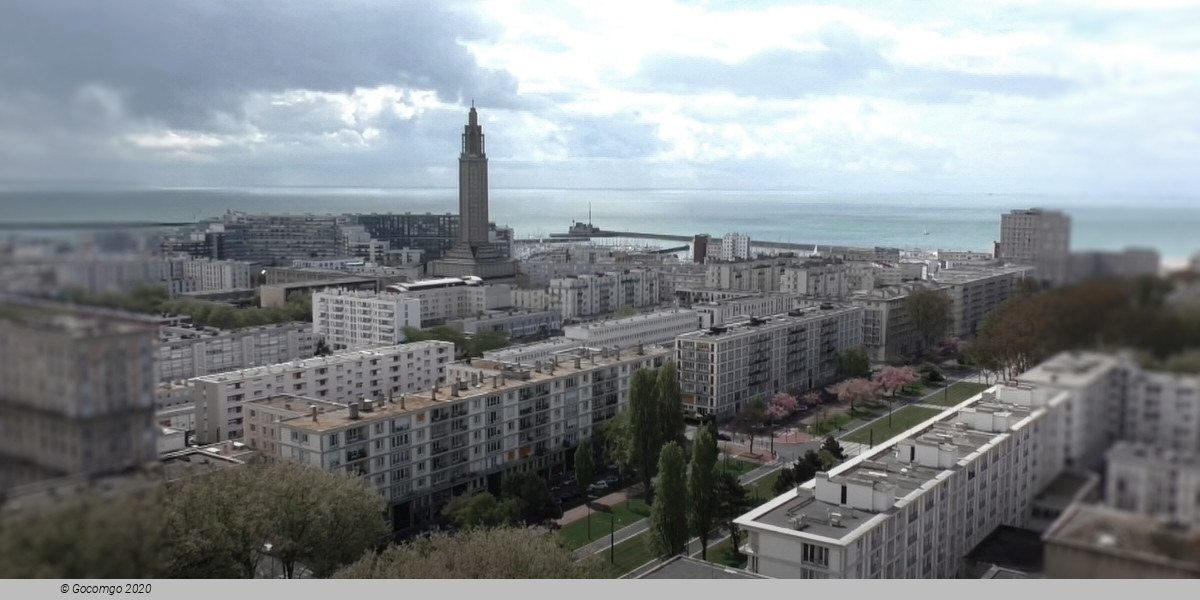Le Havre

Le Havre is an urban French commune and city in the Seine-Maritime department in the Normandy region of northwestern France. It is situated on the right bank of the estuary of the river Seine on the Channel southwest of the Pays de Caux, very close to the Prime Meridian. Le Havre is the most populous commune of Upper Normandy, although the total population of the greater Le Havre conurbation is smaller than that of Rouen. After Reims, it is also the second-largest subprefecture in France. The name Le Havre means "the harbor" or "the port". Its inhabitants are known as Havrais or Havraises.
History
When founded in 1517, the city was named Franciscopolis after Francis I of France. It was subsequently named Le Havre-de-Grâce ("Harbor of Grace"; hence Havre de Grace, Maryland). Its construction was ordered to replace the ancient harbors of Honfleur and Harfleur whose utility had decreased due to silting.
The history of the city is inextricably linked to its harbor. In the 18th century, as trade from the West Indies was added to that of France and Europe, Le Havre began to grow. On 19 November 1793, the city changed its name to Hâvre de Marat and later Hâvre-Marat in honor of the recently deceased Jean-Paul Marat, who was seen as a martyr of the French Revolution. By early 1795, however, Marat's memory had become somewhat tarnished, and on 13 January 1795, Hâvre-Marat changed its name once more to simply Le Havre, its modern name. During the 19th century, it became an industrial center.
At the end of World War I Le Havre played a major role as the transit port used to wind up affairs after the war.
The city was devastated during the Battle of Normandy when 5,000 people were killed and 12,000 homes were totally destroyed before its capture in Operation Astonia. The center was rebuilt in a modernist style by Auguste Perret.
Toponymy
The name of the town was attested in 1489, even before it was founded by François I in the form le Hable de Grace then Ville de Grace in 1516, two years before its official founding.The learned and transient name of Franciscopolis in tribute to the same king is encountered in some documents then that of Havre Marat, referring to Jean-Paul Marat during the French Revolution but was not imposed. However, it explains why the complementary determinant -de-Grace was not restored. This qualifier undoubtedly referred to the Chapel of Notre Dame located at the site of the cathedral of the same name. The chapel faced the Chapel Notre Dame de Grace of Honfleur across the estuary. The common noun havre meaning "port" was out of use at the end of the 18th or beginning of the 19th centuries but is still preserved in the phrase havre de paix meaning "safe haven". It is generally considered a loan from Middle Dutch from the 12th century. A Germanic origin can explain the "aspiration" of the initial h.
New research however focuses on the fact that the term was attested very early (12th century) and in Norman texts in the forms Hable, hafne, havene, havne, and haule makes a Dutch origin unlikely. By contrast, a Scandinavian etymology is relevant given the old Scandinavian höfn (genitive hafnar) or hafn meaning "natural harbor" or "haven" and the phonetic evolution of the term étrave which is assured of Scandinavian origin is also attested in similar forms such as estable and probably dates back to the ancient Scandinavian stafn.

